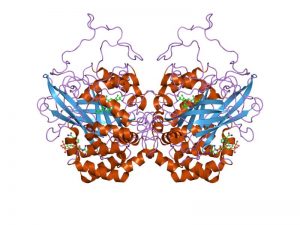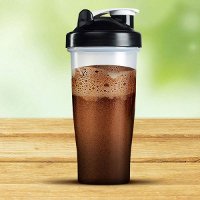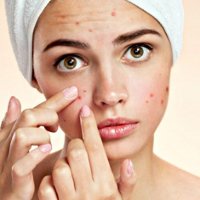Catalase is a common enzyme found in nearly all living organisms exposed to oxygen (such as bacteria, plants, and animals). It catalyzes the decomposition of hydrogen peroxide to water and oxygen. It is a very important enzyme in protecting the cell from oxidative damage by reactive oxygen species (ROS). Likewise, catalase has one of the highest turnover numbers of all enzymes; one catalase molecule can convert millions of hydrogen peroxide molecules to water and oxygen each second.
Low levels of catalase may play a role in the graying process of human hair. Hydrogen peroxide is naturally produced by the body and broken down by catalase. If catalase levels decline, hydrogen peroxide cannot be broken down so well. The hydrogen peroxide interferes with the production of melanin, the pigment that gives hair its color.
Read more: catalase supplement.
Catalase is a tetramer of four polypeptide chains, each over 500 amino acids long. It contains four iron-containing heme groups that allow the enzyme to react with the hydrogen peroxide. The optimum pH for human catalase is approximately 7, and has a fairly broad maximum: the rate of reaction does not change appreciably between pH 6.8 and 7.5. The pH optimum for other catalases varies between 4 and 11 depending on the species. The optimum temperature also varies by species.
References & External links
- Wikipedia – Catalase: https://en.wikipedia.org/wiki/Catalase.
- Kauser, Sobia, et al. “Human hair follicle and epidermal melanocytes exhibit striking differences in their aging profile which involves catalase.” (2011). “Canities or senile hair graying, a universally recognized sign of aging, remains unresolved in terms of physiological causes, although a strong genetic contribution is understood (Gunn et al., 2009). As the hair fiber continues to grow long after melanin production ceases, we suggest that melanocytes in the hair follicle may be more sensitive to the impact of chronological aging than are keratinocytes. Moreover, follicular melanocytes also age more markedly than those in the overlying epidermis. The hair follicle provides a unique opportunity to decouple the impact of age on two hair follicular tissue functions: hair formation and hair pigmentation. … This study provides analysis of race, age, and anatomically matched cultures of adult human epidermal and hair follicle melanocytes (HFMs).“
- Aebi, Hugo. “[13] Catalase in vitro.” Methods in enzymology 105 (1984): 121-126.
- Chelikani, P., I. Fita, and P. C. Loewen. “Diversity of structures and properties among catalases.” Cellular and Molecular Life Sciences CMLS 61.2 (2004): 192-208. “More than 300 catalase sequences are now available, divided among monofunctional catalases (> 225), bifunctional catalase-peroxidases (> 50) and manganese-containing catalases (> 25). When combined with the recent appearance of crystal structures from at least two representatives from each of these groups (nine from the monofunctional catalases), valuable insights into the catalatic reaction mechanism in its various forms and into catalase evolution have been gained. The structures have revealed an unusually large number of modifications unique to catalases, a result of interacting with reactive oxygen species. Biochemical and physiological characterization of catalases from many different organisms has revealed a surprisingly wide range of catalatic efficiencies, despite similar sequences. Catalase gene expression in micro-organisms generally is controlled either by sensors of reactive oxygen species or by growth phase regulons, although the detailed mechanisms vary considerably.“
- Goodsell DS (2004-09-01). “Catalase”. Molecule of the Month. RCSB Protein Data Bank.
- Boon, Elizabeth M., Aaron Downs, and David Marcey. “Catalase: H2O2: H2O2 Oxidoreductase.” Catalase Structural tutorial text (2007): 2007-02.
- Maehly, A., and Britton Chance. “Catalases and peroxidases.” Methods Biochem Anal 1 (1954): 357-424.










